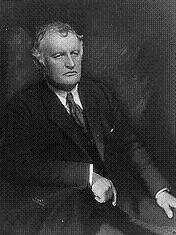Childhood
Edvard Munch was born in 1863 in a rustic farmhouse in the village of Adalsbruk, located in Loten, Norway. His father, Christian Munch, was a practicing physician, married to Laura Catherine Bjolstad. The family, including sisters Johanne Sophie, Laura Catherine Inger Marie, and brother Peter, relocated to Oslo in 1864, following Christian's appointment as medical officer at Akershus Fortress, a military area which at the time was in use as a prison. Munch's mother died of tuberculosis in 1868, the same year Inger Marie was born. Within a decade, Munch's favorite sister, Sophie, just one year his senior and a gifted young artist, also died of tuberculosis. Munch's father, a fundamentalist Christian, thereafter experienced fits of depression and anger as well as quasi-spiritual visions in which he interpreted the family's illnesses as punishment of divine origin.
Due largely to Christian's medical career with the military, the family moved frequently and lived in relative poverty. Christian would often read to his children the ghost stories of Edgar Allen Poe, as well as lessons in history and religion, instilling in young Munch a general sense of anxiety about (and morbid fascination with) death. Adding to this, Munch's frail immune system was little match for the harsh Scandinavian winters and frequent illness kept him out of school for months on end. To pass the time, Munch took up drawing and watercolor painting.
Art became a steady preoccupation for Munch during his teen years. At thirteen, he was exposed to the works of the fledgling Norwegian Art Association and was particularly inspired by the group's landscape paintings. In the course of copying these works he taught himself the techniques of oil painting.
Early Training
In the 1880s, seeking a bohemian lifestyle, Munch discovered the writings of the anarchist philosopher, Hans Jæger, head of a group called the "Kristiania-Boheme" (as a central principle of a larger anti-bourgeois agenda, the group advocated liberal sexual behavior, or "free love," and the abolition of marriage). Munch and Jæger formed a close friendship, and Jæger encouraged the artist to draw more from personal experience in his work. The Sick Child (1885-1886), a somber composition that served as a memorial to Munch's deceased sister, Sophie, speaks to Jæger's profound influence on Munch at this juncture. When the painting was exhibited as A Study in Kristiania in 1886, it was attacked by critics as well as Munch's own colleagues for its overtly unconventional qualities, such as its scratched paint surface and the work's generally unfinished appearance.

Комментариев нет:
Отправить комментарий